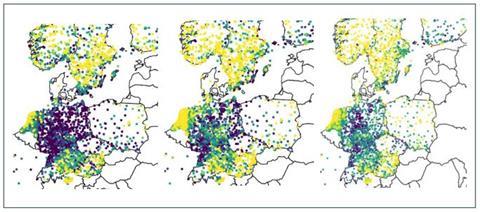Significant investment by a number of Central European countries on flood defence measures since 2002 had a major impact in ameliorating the consequences of recent floods, the reinsurance broker said.
Howden Re has released a report into the recent floods that struck Central Europe, especially parts of Germany, Austria, Czechia and Poland.
Central Europe is again facing a continuation of summer flooding, after last year’s events in Italy and Slovenia, the 2021 Bernd floods and prior reference events for the region in 1997, 2002, 2010 and 2013.
September’s Central European flooding follow floods in May and June, when Germany and Switzerland experienced extra-ordinary prolonged rainfall attributable to a so-called ‘Vb’ weather pattern.
Mitigation measures are essential as climate cycles are changing, the broker suggested.
Defence measures have changed the picture for how insured losses have transpired since historical summer flood events and this year’s flooding, Howden Re noted.
Significant investment in flood defences by several Central European countries since 2002 has had a major impact in ameliorating the consequences of heavy rains and flooding, the broker said.
“As Europe grapples with changing patterns of flood events, it is imperative that we adapt our strategies to stay ahead of emerging risks,” said Tim Edwards, managing director and head of international catastrophe and actuarial analytics, international treaty, Howden Re.
“Whilst floods are commonplace in the region, increased preparedness and investment in societal resilience have been pivotal to mitigating the impact of this event from a reinsurance perspective,” Edwards said.
The construction of the Raciborz Dolny flood control reservoir on the Oder river, has been proved a success story for Poland, Howden Re highlighted.
“The event taking place has been widely compared against the 1997 floods where 40% of Wroclaw was inundated,” Howden Re said.
Nonetheless, investments in flood defences since the 1997 and 2002 floods have substantially improved the impact of the heavy precipitation and river flooding,” the report continued.
Clear trend

A clear time trend is observed with European rainfall patterns – some regions seeing an increase, others a decrease, the reinsurance broker said.
Areas in blue on the image to the right (source: DWD) show a decrease; those in yellow an increase, Howden Re explained.
“Percent Change in Mean Daily Precipitation in Summer Months (5,6,7,8) between 1951-1975 (1961- 1975 for Czechia) and 2019-2024 (left), 1975-1997 and 2019-2024 (centre) and 1951-2008 and 2008 - 2024 (right),” the broker said.
Taking this into account Howden Re said it had developed a climate-conditioned view of European flood risk to stress test portfolios and assess the impact of these shifting trends.
Edwards said: “At Howden Re, we are championing a collaborative approach to risk management, urging all stakeholders, including cedents, reinsurers, intermediaries, and capital providers, to consider the role of flood resilience and leverage advanced risk assessments considering current day, not just historical risk.”
Extratropical cyclones of Vb type develop over the western Mediterranean and move north-eastward, leading to heavy precipitation over central Europe typically in the summer months.
Changes in climate are expected to affect the number of Vb systems that develop in Europe, Howden Re noted, with a reduction in frequency expected by the end of the century due to a northward shift of cyclone track, but more extreme Vb events expected.
“By working together, we can better understand and adapt to the changing nature of flood risks and secure comprehensive coverage to these emerging sources of earnings volatility,” Edwards added.










No comments yet